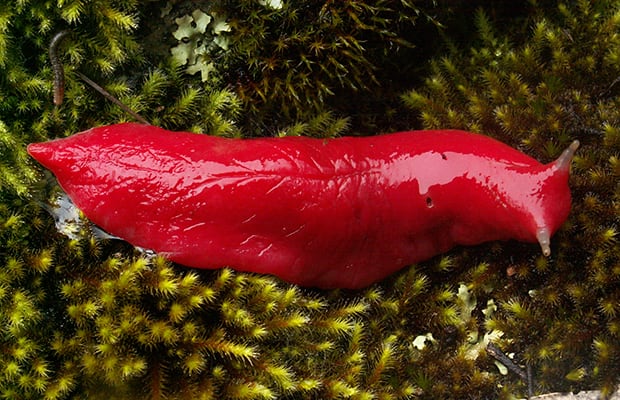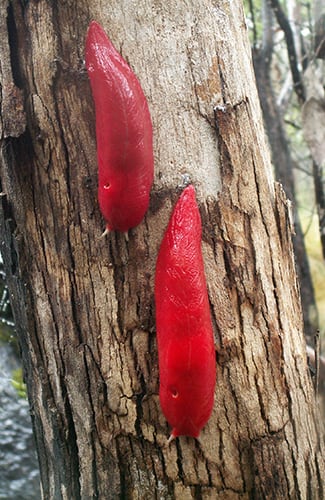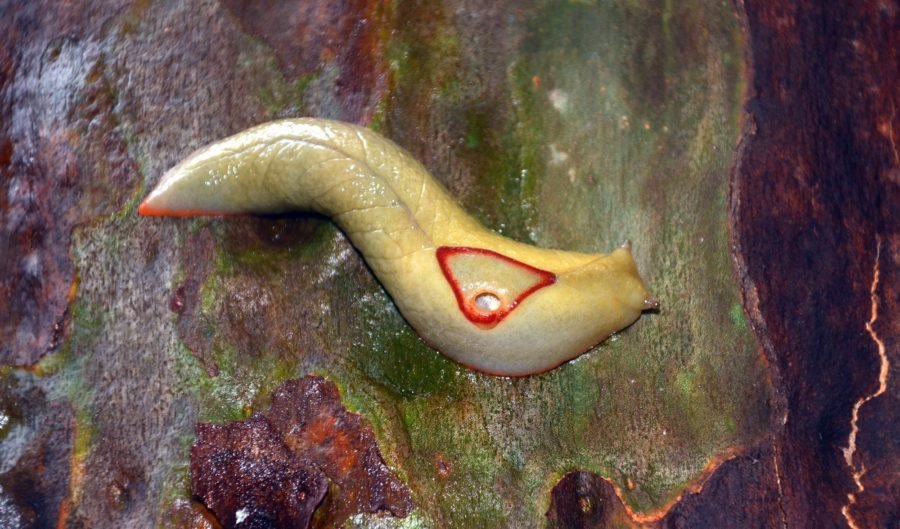Rare neon-pink slug survives bushfires

A rare, bright-pink slug that only exists atop an extinct volcano in Mount Kaputar, NSW, has managed to survive, despite a previously grim outlook.
On 26 January the NSW National Parks and Wildlife Service confirmed that 60 of the slugs had been spotted by park rangers after recent rainfall.
It was feared that the slugs had been affected by the fires that blazed through Mount Kaputar National Park in October. With their limited range (10sq.km, 1500m above sea level), rangers were concerned for their future.
The slugs were only officially named in 2013 (Triboniophorus aff. graeffei). Before then it was thought the slugs were merely a relative of Australia’s triangle slugs.
The NPWS posted the update on the slugs to its Facebook page, writing, “They may not be as cute as koalas or wallabies, but this species also plays an important role in its ecosystem.”
It also confirmed that the national park will remain closed to visitors due to the fire damage.
High-altitude slugs
The slugs have maintained a low profile due to their remote location and their preference for a cold, wet environment – they only emerge after a good bout of rain.

At their largest they reach roughly the length of a paperback book and have a width of 4–6cm. Ranger Michael Murphy, who’s also a trained biologist with a specialty in land snails, believes that with their charismatic colour and size, these slugs are a bright figurehead for the many more dowdy threatened invertebrates.
“There are more land snails listed as threatened, endangered or extinct by the International Union for the Conservation of Nature (IUCN) than birds, mammals, reptiles, amphibians and fish put together,” says Michael.
Their damp, canopied patch, which is also home to the Kaputar hairy snail, the Kaputar cannibal snail and a dozen other important species, was the first land-snail habitat to be declared an endangered ecological community.
And why pink you ask?
“There’s one idea that the pink colour camouflages them against the colour of fallen snow gum leaves on the forest floor,” says Michael.
“But then again they spend a lot of their time way up in the canopy nowhere near the floor… so it might just be that if you’re a giant slug way up on an isolated mountain top, you can be whatever colour you like.”


